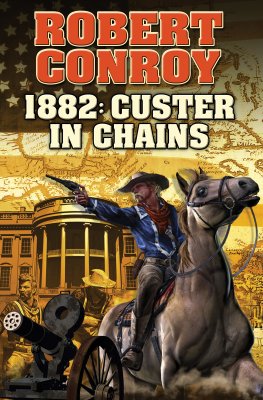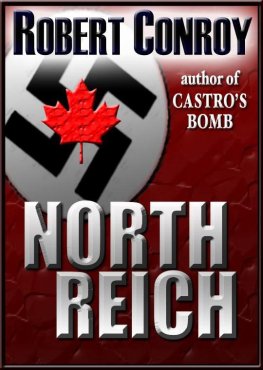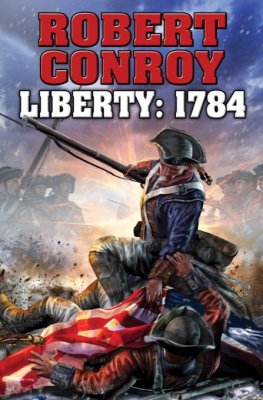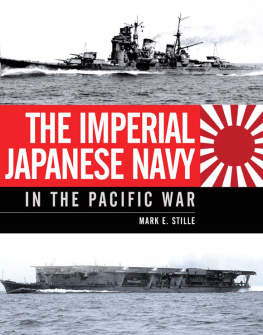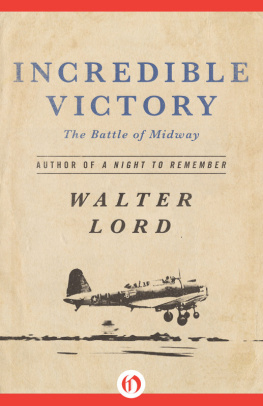Seeing a book published never gets old and it is never done alone. Id like to thank everyone at Baen along with Eleanor Wood and her crew at Spectrum for all their work and for believing that Rising Sun has a future. Of course, my wife and daughter were very positive forces.
And finally, to Quinn and Brennan: Not yet but youre getting there.
INTRODUCTION

IN JUNE 1942, WHAT REMAINED OF THE UNITED STATES NAVYS Pacific Fleet after the disaster at Pearl Harbor was on its way to destiny at Midway. With knowledge provided by their top-secret codebreaking efforts, the American commanders know the intent and size of the Japanese fleet. With only three carriers and the garrison of Midway against Japans four, Americas only hope was to pull off an ambush. To make matters worse, a powerful bombardment and invasion force was following the Japanese carriers and would launch the invasion of Midway itself. Yet another Japanese task force was en route to attack our bases in Alaska.
The Japanese thought they were in a win-win position. If the American fleet did not show, then they would seize Midway, a base that would threaten Hawaii. If the Americans did rise to the challenge, the overwhelming might of the Imperial Japanese Navy would destroy them.
To get in position, the American forces would have to slip past a picket line of Japanese submarines before they could set up and attack the Japanese carrier force.
In actual history, the U.S. Navy won an overwhelming victory that some have described as miraculous. The Japanese subs were on duty a day late and the proverbial dollar short, and all four Japanese carriers were sunk at a cost of one of ours. In the space of a few minutes, the course of the war in the Pacific was changed forever. Japans death spiral to ultimate defeat in August 1945 had begun and she would never again be able to seize the initiative.
* * *
In this tale of alternate history, some of the Japanese submarines are in place when the American carriers attempt to steam by. Enemy submarines attack, unleashing a storm of torpedoes that sink two American carriers. The surviving ships of the American fleet fall back in disarray to Hawaii. The third American carrier is hunted down and destroyed, all without significant loss to the Japanese. Midway is forced to surrender and the Japanese win another tremendous victory.
Victory fever again grips the Japanese and Admiral Yamamoto is not immune. Hed originally felt that the victory at Pearl Harbor would give him a year before the U.S. could react. Now he feels that he can gain at least two more years of supremacy against the United States, perhaps much longer, by devastating Americas West Coast. He hopes that bloody pressure will be enough to ensure a diplomatic peace that will preserve most, if not all, that Japan has conquered.
However, there are those who have doubts. The fruits of war are tumbling into our mouths almost too quickly, Emperor Hirohito said in real history and before Midway. Events would prove him right.
* * *
As I did in my previous novels about the war in the Pacific, Ive conveniently ignored the International Date Line. Ive also adopted our way of using Japanese names. Its just easier that way.
Also, while the very real problems with American torpedoes are chronicled in my earlier novel, 1942, they could not be ignored in this story as they were a significant part of the early war in the Pacific.
Regarding the Battle of Midway, a number of fine histories by the likes of Lord and Prange have been written and Ive used them extensively. A more recent and very intriguing history of Midway, Shattered Sword by Parshall and Tully, was written largely from the Japanese perspective. Along with being well-written and fascinating, it was a great help in sorting out Japanese motives, doctrine, and capabilities.
Robert Conroy
CHAPTER 1

LIEUTENANT TIM DANE, USNR, COULDNT SLEEP. GOING TO WAR for the first time will do that to a man, he thought. Maybe it would happen every time. But then he hoped there wouldnt be a second time. Jesus, what kind of a mess was he in?
Instead of tossing in his bunk, he got up and paced along the flight deck of the aircraft carrier Enterprise as she plowed her way through the Pacific swells toward her destiny near Midway Island.
Dane was a very junior member of Admiral Spruances staff on the carrier, so he was privy to the basic strategy. By this time, of course, so was every one of the two thousand men on the four-year-old, twenty-five-thousand-ton carrier. The Enterprise was like a small town in which there were few secrets. Nor was there any need to keep quiet. After all, who could you tell?
The Enterprise was accompanied by a second carrier, the Hornet. The two carriers were protected by six heavy cruisers, one light cruiser, and nine destroyers. These made up Task Force 16 under the command of Admiral Raymond Spruance. The six heavies were the Atlanta, Minneapolis, New Orleans, Pensacola, Northhampton, and Vincennes and constituted a powerful force by themselves. The light cruiser was the Atlanta.
Waiting for the arrival of the two carriers was TF 17, now off Midway with a third carrier, the Yorktown, and her escorts. These ships constituted almost all that was left of the United States Navy in the Pacific after the catastrophe at Pearl Harbor. One more carrier, the Saratoga, was reported to be undergoing repairs, probably in San Diego.
Prior to the attack on Pearl Harbor, many naval officers had stubbornly held onto the dogma that the battleship was the navys primary weapon, and that the carriers role was that of reconnaissance rather than battle. The attack on Pearl Harbor, in which eight U.S. battleships were either sunk or damaged by enemy airplanes launched from carriers, had done much to change that perception, but it had not totally gone away.
Part of the reason for this sense of nostalgia was because carriers werent lovely ships. Like all carriers, the Enterprise lacked the graceful, rakish silhouette of a cruiser or destroyer, or of the new battleships whose pictures Dane had seen on the wall of the wardroom. The Enterprise was frankly a floating block that carried about eighty planes.
Possibly because of a carriers lack of glamor or tradition, a number of very senior officers still considered the disaster at Pearl Harbor an aberration caused by the incompetence of those in command of the fleet. Guns would sink enemy ships. Always had, always would.
Since Pearl Harbor, the Enterprise had undergone modifications to enhance her ability to fight airplanes. A number of 20mm Oerlikon antiaircraft guns had been added to her arsenal.
TF 16 was on its way to Midway Island to rendezvous with the Yorktown in a desperate attempt to stop the Japanese from attacking and taking Midway and using it as a base for operations against Hawaii. Dane knew that not only would the three carriers and their escorts be outnumbered and outgunned by the Japanese, but they had to evade a picket line of Japanese submarines that highly classified intelligence said was going to be established in front of their approach. The enemy subs could either ruin the ambush by announcing their presence, or attack the carriers and possibly do great damage. The men of the Enterprise




